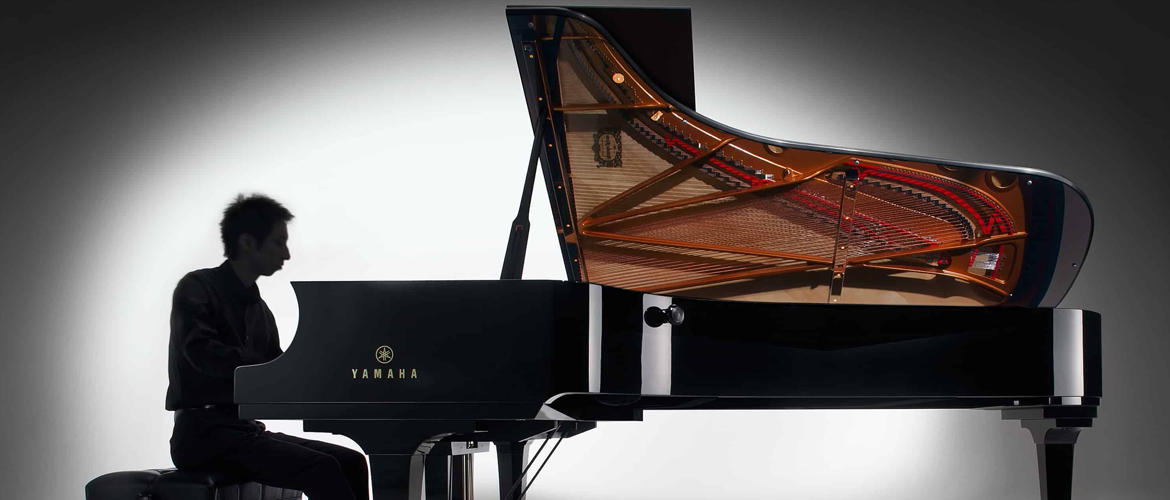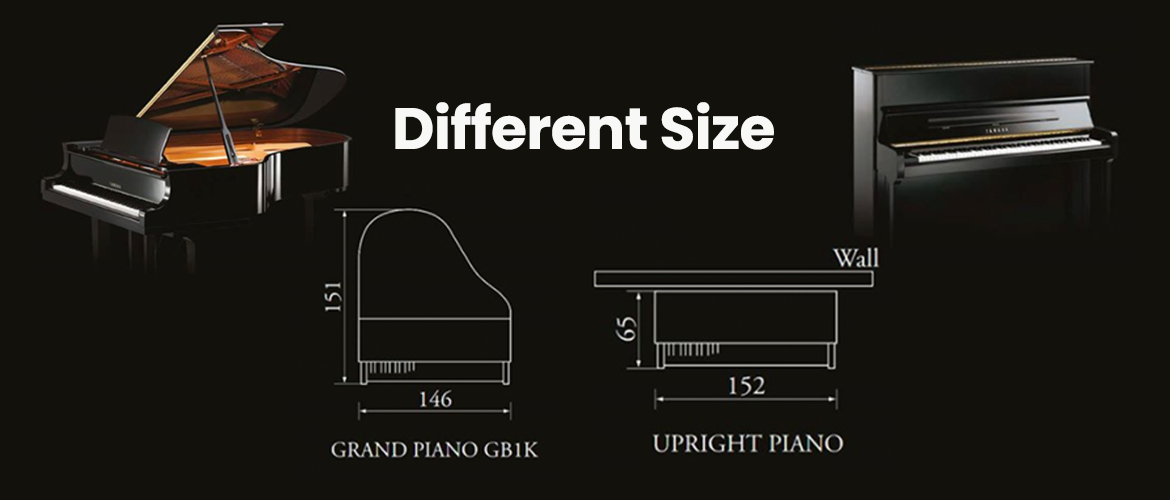{{item.name}}
{{item.attribute}}: {{item.attribute1}}
{{item.attribute2}}: {{item.attribute3}}
NRs {{item.price}} NRs {{Number(item.price) - ((Number(item.discount)/100 * Number(item.price)))}} NRs {{item.price}}
This item is not available now.

In an upright piano, the strings are strung vertically to make the instrument more compact, which allows the piano to be played in a limited space. In contrast, the grand piano retains the shape of the original pianoforte in which the strings are strung horizontally, and has a greater potential for expression.

There is a significant difference between the action mechanisms of a grand piano and an upright piano.
Grand piano
Horizontal. Because the hammers return to their rest position under their own weight, repetition, in which the notes are repeated quickly such as when playing trills, is smooth (key repetition as fast as about 14 times per second is possible).
Upright piano
Vertical. Hammers rely on springs to return to the at-rest position, and so there is a limit to fast repetition such as is used when playing trills (key repetition as fast as about seven times per second is possible).

The pedals have different functions in a grand piano and an upright piano.
Grand piano
Shift pedal (left pedal): Also called the soft pedal or una corda pedal. Shifts the entire action assembly to the right, changing not only the sound volume, but also making minute changes to the tone.
Sostenuto pedal (middle pedal): Keeps the dampers raised and away from the strings of any keys played just before depressing the pedal. This makes it possible to sustain selected notes.
Sustain pedal (right pedal): Also called the damper pedal. Dampers remain lifted even if the fingers are taken off the keys, sustaining all played notes.
Upright piano
Soft pedal (left pedal): When this pedal is pressed, all of the hammers are moved closer to the strings, reducing the sound volume.
Muffler pedal (middle pedal): Also called the practice pedal. A thin piece of felt is dropped between the hammers and strings, greatly muting the sound.
Sustain pedal (right pedal): Also called the damper pedal. Dampers remain lifted even if the fingers are taken off the keys, sustaining all played notes.

Grand Piano
Grand pianos of any size will sound best when played in a spacious room with high ceilings. Ample space allows the piano to achieve proper resonance and be played dynamically. A larger grand piano will require more space, while a baby grand piano can offer excellent sound in a smaller room like a living room or classroom. When purchasing a grand piano, take accurate measurements to determine how much space you have available. Add a few extra feet to the length of the piano to account for the piano bench.
The standard width of a grand piano is also about 5'. The length varies from 4½' to 9½'. The total floor space allowance for the smallest grand should be at least 5' wide by 6½' long, including bench space. Grand pianos are measured by the length from the very front of the keyboard to the farthest end of the piano along the spine, with the lid closed.
Upright Piano
An upright piano is the best purchase if there isn't much space available, thus making it a better option for domestic music-making and practice. Upright pianos are an excellent choice for churches, community centers, schools, music conservatories, and also popular models for in-home purchase.
On average, the upright piano measures beyond 48 inches in height and has a width of 58 inches. This makes it the tallest of all the vertical pianos